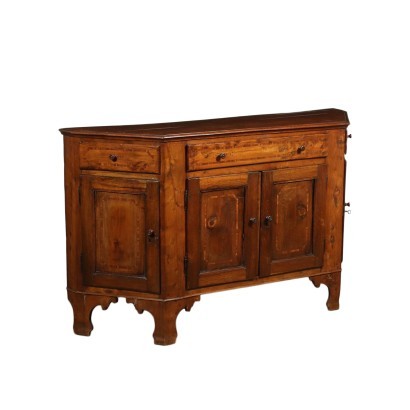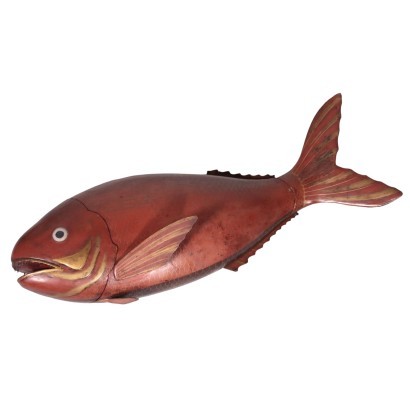Sideboard Scantonata Ancient Woods
Features
Age: 19th Century / 1801 - 1900 , 20th Century / 1901 - 2000
Origin: Italy
Main essence: Brazilian Rosewood , Walnut , Elm
Description
Notched sideboard made with ancient woods, supported by shaped shelf feet, on the front it has two paneled doors surmounted by a drawer, door and drawers also on the sides. In elm and walnut, decorated with piping in bois de rose.
Product Condition:
Product in fair condition showing some signs of wear.
Dimensions (cm):
Height: 109,5
Width: 186,5
Depth: 59,5
Additional Information
Age:
19th Century / 1801 - 1900
19th Century / 1801 - 190020th Century / 1901 - 2000
20th Century / 1901 - 2000Main essence:
Brazilian Rosewood
It is a hard, light blond wood, but with strong red and pinkish veins, which is obtained from tropical trees similar to rosewood. Its veins are reminiscent of striped tulips, which is why it is called tulipwood in English-speaking areas. It is used for inlays, often combined with bois de violette. In the 1700s and 1800s it was highly appreciated and used in France and England for precious veneers. It gives off scent for decades if not centuries after curing.Walnut
Walnut wood comes from the plant whose botanical name is juglans regia , probably originally from the East but very common in Europe. Light or dark brown in color, it is a hard wood with a beautiful grain, widely used in antique furniture. It was the main essence in Italy throughout the Renaissance and later had a good diffusion in Europe, especially in England, until the advent of mahogany. It was used for solid wood furniture and sometimes carvings and inlays, its only big limitation is that it suffers a lot from woodworm. In France it was widely used more than anything else in the provinces. In the second half of the eighteenth century its use decreased significantly because mahogany and other exotic woods were preferred.Elm
Very hard and compact wood, which comes from ulmus campestris . It is distinguished by its reddish brown color. It was mainly used for rustic furniture in France, Holland and Scandinavia. In England, however, it was also used a lot in inlay work. It could also interest you































